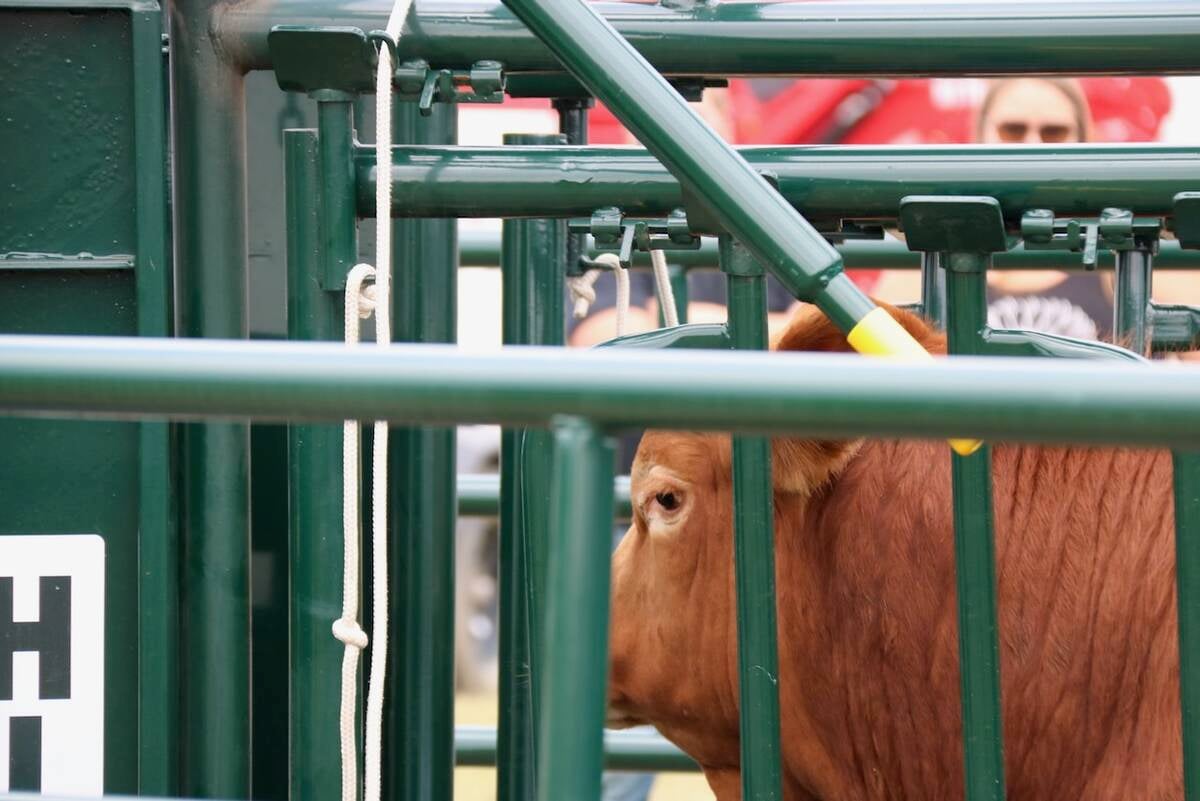One of the more devastating disease outbreaks that I’ve witnessed was probably one of the easiest to prevent.
Several summers ago I was called by a local practitioner to help investigate high levels of mortality in young calves on pasture.
A cow-calf producer had a large number of calves die suddenly on pasture and the deaths were at that point still unexplained. The carcasses were often decomposed or scavenged, making post-mortem diagnosis difficult.
We walked through the pasture and saw several lame calves and unfortunately found even more dead ones.
Read Also

Good handling equipment a must on cattle operations
It’s important for the safety of producers and everyone else dealing with their stock that handling equipment is functional and safe.
Several of the carcasses were relatively fresh despite the hot temperatures, and so we were able to make a diagnosis of blackleg based on the post-mortem findings.
Blackleg is a highly fatal disease of young cattle caused by one of the bacteria from the clostridial family (Clostridium chauvoei).
This bacterium is a normal inhabitant of the intestinal tract of cattle and can survive in the soil for many years.
Outbreaks have occurred in cattle herds after soil excavation which may initiate the activation of bacterial spores in the soil.
The blackleg bacteria are ingested by calves and pass through the walls of the digestive tract and eventually are deposited in muscle tissue throughout the body. Since the bacteria are residing in the muscle, the disease can be initiated without any wounds although bruising or excessive exercise may be predisposing factors. The disease occurs in young, rapidly growing animals between 10 weeks and two years of age.
The most common presenting sign of this disease is simply sudden death.
A calf with early signs of the disease will often be suddenly lame or very depressed. It may be down and unable to get up. On closer examination you may find swellings in the hip, chest, shoulder, back or neck.
The swellings may actually crackle when you touch them and at first are hot and painful, but eventually become cold and insensitive. These animals will die within 12 to 24 hours after being noticed with clinical signs.
At post-mortem we identify blackleg by the dry, spongy areas in the muscles that are often discoloured dark red or even black. There are often small gas bubbles present and a characteristic sweet odour.
In this case, the calves we examined had a severe infection of the heart muscle, which would certainly cause sudden death. The rapid onset of disease makes treatment almost impossible.
In outbreak situations, we would vaccinate all the remaining animals and give all calves prophylactic antibiotics as well. Carcasses of animals that have died of blackleg may be a source of contamination for the soil and should be promptly buried or burned.
Blackleg is almost completely preventable with vaccination. Almost every livestock pharmaceutical company makes a seven-way or eight-way clostridial vaccine that is highly effective against blackleg and other clostridial diseases.
Calves should be vaccinated at one to two months of age and then revaccinated at weaning and at one year of age.
Producers with herds that calve on pasture will need to consider the best way of implementing a strategy to ensure their calves still receive this vaccine to avoid the risk of this serious disease.
Most producers in Western Canada have routinely vaccinated for clostridial diseases for years. Blackleg is remarkably easy to prevent and the vaccine is quite inexpensive.
However, the bacteria which causes this disease is prevalent in the soil of our pastures and if you take this disease for granted and decide to skip the vaccine for even one year, results can be devastating.
John Campbell is head of Large Animal Clinical Sciences at the University of Saskatchewan’s Western College of Veterinary Medicine.














